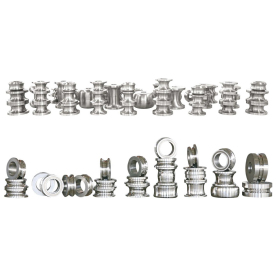****
In today’s fast-paced manufacturing landscape, efficiency and precision are paramount. As industries evolve and the demand for high-quality piping solutions increases, manufacturers are turning to advanced technologies to streamline their operations. Central to this evolution is high-speed pipe making machinery, which has revolutionized the process of pipe production. This article delves into the benefits, innovations, and future prospects of high-speed pipe making machinery, highlighting its significance in improving productivity and quality in various sectors.

Exploring the Benefits and Innovations in High-Speed Pipe Making Machinery for Modern Manufacturing Processes

Exploring the Benefits and Innovations in High-Speed Pipe Making Machinery for Modern Manufacturing Processes
High-speed pipe making machinery refers to specialized equipment designed to produce pipes at an accelerated rate while maintaining excellent quality standards. This machinery employs cutting-edge technology and engineering to enhance production efficiency without compromising the integrity of the finished product. Industries such as construction, oil and gas, automotive, and plumbing are increasingly relying on these advanced systems to meet their growing needs.
One of the foremost benefits of high-speed pipe making machinery is its ability to significantly increase production capacity. Traditional pipe manufacturing processes often involved lengthy production times, resulting in long lead times and potential delays in project timelines. With the introduction of high-speed machines, manufacturers can produce a larger volume of pipes in a shorter duration. This not only helps to meet the immediate demands of the market but also fosters flexibility in responding to unforeseen production needs.
Additionally, high-speed pipe making machinery often incorporates automation and robotics, which further enhances productivity. Automated systems can perform repetitive tasks with greater precision and consistency than human operators. This not only reduces the risks of human error but also minimizes downtime associated with manual processes. The integration of robotics allows for continuous production cycles, making it feasible to operate machinery without interruption, which is critical for meeting tight deadlines.
Quality control is another area where high-speed pipe making machinery excels. The latest technologies are designed with advanced monitoring systems that continuously assess the quality of the pipes being produced. Features such as real-time inspection and automated feedback mechanisms ensure that any deviations from quality standards are promptly addressed. As a result, manufacturers can produce pipes that meet stringent industry specifications and regulations, reducing the likelihood of defects and ensuring customer satisfaction.
Energy efficiency is a critical consideration in modern manufacturing operations, and high-speed pipe making machinery often incorporates state-of-the-art energy-saving technologies. By optimizing energy consumption during the production process, these machines can significantly reduce operational costs and minimize the environmental impact of manufacturing activities. This aligns with the growing emphasis on sustainability across industries, as companies seek to adopt practices that promote environmental stewardship.

Exploring the Benefits and Innovations in High-Speed Pipe Making Machinery for Modern Manufacturing Processes
The innovation in high-speed pipe making machinery does not stop at speed and efficiency; it also encompasses versatility in production capabilities. Modern machines are engineered to accommodate a wide range of materials and pipe specifications, allowing manufacturers to diversify their product offerings. For instance, high-speed machines can be configured to produce a variety of pipe sizes, wall thicknesses, and materials, including PVC, HDPE, and steel. This adaptability enables manufacturers to respond to specific customer needs and market trends more effectively.
Looking to the future, the landscape of high-speed pipe making machinery is poised for further advancements. As industry 4.0 concepts gain traction, the integration of the Internet of Things (IoT), artificial intelligence (AI), and machine learning is likely to redefine manufacturing processes. Smart machines equipped with data collection and analysis capabilities can provide valuable insights, enabling manufacturers to enhance their operational strategies and decision-making processes. Predictive maintenance, for example, can help reduce downtime and prolong the lifespan of machinery by anticipating maintenance needs before they become critical.
In conclusion, high-speed pipe making machinery is transforming the pipe production landscape by enhancing efficiency, quality, and flexibility. The benefits of increased production capacity, automation, quality control, energy efficiency, and versatility are driving manufacturers to invest in these advanced technologies. As innovations continue to emerge, the future of high-speed pipe production looks promising, positioning manufacturers to meet the evolving demands of various industries while maintaining a commitment to excellence and sustainability. Embracing high-speed pipe making machinery is not just a strategic move; it is essential for staying competitive in the ever-changing world of manufacturing.Solid state HF welder for metal processing




